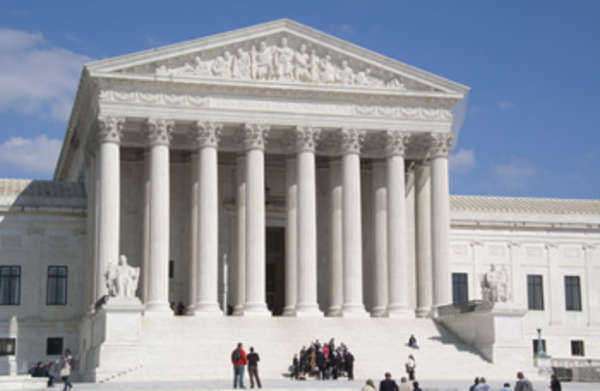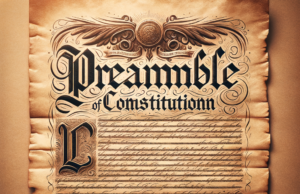Table of Contents
- 1 27th Amendment Overview
- 2 History of the 27th amendment
- 3 Purpose of the 27th amendment
- 4 What is the 27th Amendment?
- 5 The 27th Amendment Defined
- 6 President of the United States
- 7 Stipulations of the 27th Amendment
- 8 27th Amendment Facts
- 9 States Ratifying the 27th Amendment
- 10 States Not Participatory in the Ratification of the 27th Amendment
- 11 Court Cases Associated with the 27th Amendment

27th Amendment Overview
The 27th amendment to the United States Constitution is one of the most significant and least-known amendments. Ratified in 1992, the amendment addresses the issue of congressional pay raises. It is a testament to the persistence and dedication of the American people that the 27th amendment was added to the Constitution over 200 years after it was first proposed.
In this article, we will explore the history of the 27th amendment, its purpose, and how it has influenced the United States.
History of the 27th amendment
The 27th amendment was first proposed in 1789 alongside the Bill of Rights, which included the first ten amendments to the Constitution. At the time of its proposal, the amendment received only six ratifications. This was not enough to meet the required threshold of three-fourths of the states, and so it was not included in the Constitution.
It was not until the 1980s that interest was renewed in the amendment. A student named Gregory Watson wrote a paper as part of a college assignment in which he argued that the amendment was still open for ratification. Watson’s teacher gave him a C grade on the paper, arguing that the proposal was a “dead letter.
Determined to prove his point, Watson embarked on a nationwide campaign to have the amendment ratified. He sent letters to state legislators, filed lawsuits, and even testified before Congress. During this campaign, Watson’s research uncovered that the proposed amendment had technically never expired and could still be ratified.
In 1992, Michigan became the 38th state to ratify the amendment, meeting the requirement for three-fourths of the states to approve its inclusion in the Constitution. The 27th amendment was finally added to the Constitution on May 7, 1992.
Purpose of the 27th amendment
The 27th amendment prohibits any law from increasing or decreasing the pay of members of Congress until the start of the next scheduled session of Congress. The amendment aims to prevent Congress from passing a pay raise for themselves and having it take effect immediately.
This amendment typifies the frugal attitude of the Founding Fathers towards governing and power. Our Founding Fathers had a deep distrust of government and sought to prevent it from overreaching. They believed that the government should not be exempt from the same financial strain the rest of the country endured.
Although the 27th amendment deals with a relatively narrow issue, it is nonetheless significant. It is a reminder of the power of the American people to influence the Constitution and protect their rights.
What is the 27th Amendment?
“No law, varying the compensation for the services of the Senators and Representatives, shall take effect until an election of Representatives shall have intervened.”
The 27th Amendment Defined
Date Proposed
The 27th Amendment was first proposed on September 25th, 1789
Date Passed
The 27th Amendment was passed May 7th, 1992
President of the United States
Bill Clinton was the President of the United States during the ratification of the 27th Amendment
Stipulations of the 27th Amendment
The 27th Amendment is the most recent constitutional amendment passed; as of 2011, there have been 27 Constitutional Amendments passed with regard to the Constitution of the United States of America
The 27th Amendment addresses the salary rate of members of Congress, which is comprised of a bicameral legislature – the Senate and the House of Representatives
The 27th Amendment stipulates that members of the Congress are not permitted to adjust their respective wage earnings in the middle of a term; in the event of a proposed wage adjustment, members of Congress must address any or all concerns with regard to wage adjustment prior to the starting of a new Congressional term
27th Amendment Facts
The 27th Amendment has never been cited within a Supreme Court Hearing
The 27th Amendment addresses the adjustment of costs of living with regard to inflation
The 27th Amendment is considered to be the Constitutional Amendment with the longest duration of time between the initial proposal and subsequent ratification; the 22nd Amendment is considered to maintain the second-longest duration of 4 years between proposal and passing
States Ratifying the 27th Amendment
1. Alabama
2. Alaska
3. Arizona
4. Arkansas
5. California
6. Colorado
7. Connecticut
8. Delaware
9. Florida
10. Georgia
11. Hawaii
12. Idaho
13. Illinois
14. Indiana
15. Iowa
16. Kansas
17. Kentucky
18. Louisiana
19. Maine
20. Maryland
21. Michigan
22. Minnesota
23. Missouri
24. Montana
25. Nevada
26. New Hampshire
27. New Jersey
28. New Mexico
29. North Carolina
30. North Dakota
31. Ohio
32. Oklahoma
33. Oregon
34. Rhode Island
35. South Carolina
36. South Dakota
37. Tennessee
38. Texas
39. Utah
40. Vermont
41. Virginia
42. Washington
43. West Virginia
44. Wisconsin
45. Wyoming
States Not Participatory in the Ratification of the 27th Amendment
1. Massachusetts
2. Mississippi
3. Nebraska
4. New York
5. Pennsylvania
Court Cases Associated with the 27th Amendment
Coleman v. Miller (1939) – this court case addressed the controversy surrounding the Amendment process with regard to the regulation of time elapsed between the initial passing of an amendment and its eventual ratification


























